- greenbay@aaanimalcontrol.com
Call 24/7 for a free quote:
920-351-4229
Green Bay WI Wildlife Information
Wisconsin Wildlife Commission: 1-800-847-9367
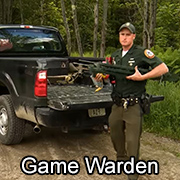 If you have any questions about the wildlife of Green Bay, you can contact the Wisconsin Wildlife Commission,
sometimes called the Wisconsin Fish & Wildlife Agency. Wisconsin game wardens address many wildlife management matters, from hunting licenses, to poaching, endangered species, and Green Bay wildlife management.
They deal with wild animals outside the range of a pest control company, such as cougars or bears. If you have a problem with nuisance wildlife in Green Bay like squirrels, snakes, bats, or raccoons,
the state agency is very unlikely to help. You need to hire a private company (here are their prices) such as Green Bay Wildlife Removal at 920-351-4229.
If you have any questions about the wildlife of Green Bay, you can contact the Wisconsin Wildlife Commission,
sometimes called the Wisconsin Fish & Wildlife Agency. Wisconsin game wardens address many wildlife management matters, from hunting licenses, to poaching, endangered species, and Green Bay wildlife management.
They deal with wild animals outside the range of a pest control company, such as cougars or bears. If you have a problem with nuisance wildlife in Green Bay like squirrels, snakes, bats, or raccoons,
the state agency is very unlikely to help. You need to hire a private company (here are their prices) such as Green Bay Wildlife Removal at 920-351-4229.
I also have listed several sources for free Green Bay wildlife help. One example, if you've found an injured animal or lost baby bird or other baby animal is the Green Bay Wildlife Rehabilitation Clinic: 920-391-3671 Or just read below for more info about the wild animals of Green Bay.
Types of Wildlife and Animal Problems in Green Bay, WI
Wisconsin State bird: American robin
State mammal: Badger
State fish: Muskellunge
State insect: European honeybee
Wisconsin borders Lake Michigan and Lake Superior, and those massive bodies of water give the state a wide range of habitats. Not only does the land have an area of flat plains, it has a variety of sandstone formations in semi-arid locations, and it has hardwood and coniferous forests over approximately 46 percent of the state. No matter what habitat you are wander through in Wisconsin, you are likely to run into a lake or two, as thousands of lakes were created by glaciers during the last ice age.
A state with such a high percentage of forests is home to a variety of woodland creatures. Many of the common animals found in Wisconsin are also the same animals that become nuisance home invaders. The raccoon, which is abundant through the forests in the state, is often opportunistic and will scavenge around homes and often live in attics. Other frequently seen animals include skunks, opossums, foxes, squirrels, rats, mice, voles, moles, mink, porcupines, and weasels.
The thick forests also provide ample coverage for a host of larger animals. The largest of all Wisconsin creatures is the moose. This grazer is followed by the elk and the black bear in size. Wolves, cougars, bobcats, and coyotes are other predators in the state. While reclusive, cougars have been known to become problematic if their food supply is diminished or if humans have spread too far into their territory.
Timber wolves, the species of wolf in Wisconsin, are known to be the most aggressive out of the primary wolf species in the United States. These animals sometimes hunt livestock, though coyotes tend to be more prone to such close-human activity. Another common predator of smaller mammals is the bobcat. This feline is rarely seen by humans, which seems to suit the cat just fine.
With so many bodies of water in the region, semi-aquatic animals have found a home in Wisconsin as well. The state has a thriving population of beavers, muskrats, and otters. These animals keep mainly to themselves, but sometimes their activities on private property can cause problematic flooding.
Even though nuisance animals are common in Wisconsin, removal of wildlife is strictly regulated in the state, and the law is stringently enforced. To avoid hefty fines, homeowners are encouraged to consult a wildlife professional before attempting any home removal of a nuisance animal.
If you need a professional wildlife trapper in Green Bay, WI call Green Bay Wildlife Removal: 920-351-4229
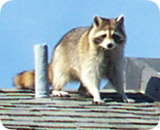
Green Bay Raccoons:
This masked animal is fairly common in Green Bay, WI. They frequently raid trash cans and steal pet food. They also often choose to live in the attic or chimney of your home. One of Wisconsin's beautiful animals, but often a nuisance. We offer Green Bay raccoon removal.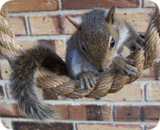
Green Bay Squirrels:
Squirrels are often a pest in Green Bay. They love to live in an attic, and will chew on wood or electrical wires. They are agile creatures, and live throughout the state of Wisconsin. Call Green Bay Wildlife Removal if you need squirrel removal in Green Bay.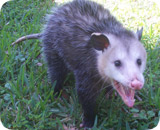
Green Bay Opossum:
You may spot this animal in Green Bay at night time, perhaps rooting through your garbage. This opportunistic animal will take your pet's food or live under your porch. The possum is a great Wisconsin survivor, and not all that ugly.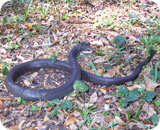
Green Bay Snakes:
There are many species of snakes in Green Bay, but few are venomous. If you need help identifying snakes of Wisconsin, browse this site or give us a call at 920-351-4229. We at Green Bay Wildlife Removal can provide Green Bay snake control any time you need us.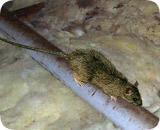
Green Bay Rat Control:
The Norway Rat, Roof Rat, and House Mouse inhabit most areas of North America that people inhabit, including most Wisconsin cities. They contaminate food and love to live in the walls or attic of a home. Green Bay Wildlife Removal can get rid of them once and for all.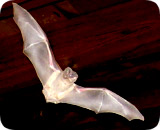
Green Bay Bats:
Bats are special animals, and found throughout Wisconsin. They are good creatures and eat a lot of insects, but if you have an infestation of bats in your home or building, you can give us a call for professional Green Bay bat removal and control.REPORT WILDLIFE ISSUES: 920-448-3201
To report a dead animal on the road, an injured bird, a lost baby squirrel, a dangerous bear, or anything like that, call animal services at 920-448-3201
If they can't help, call the Wisconsin Wildlife Commission at 920-448-3201. You can also call your local sheriff department at 920-448-3201 - they often deal with public wildlife issues.
We are experts with all kinds of WI wildlife and are familiar with the wild animals native to Green Bay. If you need Green Bay pigeon control, geese or other bird removal, we can help. We are experts with skunks and
skunk problems, digging animals such as moles, armadillos, & groundhogs, and we offer Wisconsin beaver control and removal. Green Bay Wildlife Removal also provides dead animal removal services. 920-351-4229
Call us for a professional solution to your wildlife problem.
We provide professional wildlife control servics for the greater Green Bay area, including all of Sturgeon Bay, south to Two Rivers and Manitowoc, west to Oshkosh and Appleton, New London, and Shawano.
Green Bay Wildlife Tip
The law on trapping opossums
If you have an opossum problem, you are going to want to deal with it, naturally. If you are deciding to deal with the animal problem yourself, you are going to want to be sure of the rules. You will often notice that from state to state, and city to city, the rules and regulations on trapping and releasing wild animals will differ massively, so it is always wise to either consult your local animal services or wildlife organization to make sure that what you are about to do is perfectly legal. At the same time, you could always call a local pest and wildlife control company or expert to fill you in on the rules.
For example, in Washington, it is legal to trap an opossum, and you do not need a special permit in order to do just that. However, if you are using a different trap to live ones, certain permits may be required. The only problem with this is that it is actually ILLEGAL, (in Washington) to release the opossum on a property other than the one that it was captured on, unless a permit has been obtained. This means that you will have to call on the assistance of the local wildlife guys to ensure that you are releasing the critter in a place that it is legal to do.
Your best bet, if you want to trap and release an opossum, is to give the local animal services people a call. They will be more than happy to fill you in on the little details, such as how to legally trap and where to legally release, and you can be sure that you are dealing with the situation in the best and most legal way possible. After all, you don't want to get into trouble all because the opossum annoyed you!
Green Bay, WI Wildlife News Clip:
Keeping critters out: Now's the time to take steps to keep wildlife out of your home this winter
A local wildlife control and wild animal removal pro said there are several products on the market that homeowners can use to reduce the risk of having their home be invaded by animals. Bird guards can be a great solution, The critter capture and wild animal removal pro said, for bathroom and kitchen vents.
Another area of concern can be the PVC pipes from a high efficiency furnace that stick out from the side of a home. Left uncovered, they can be a haven for birds' nests and bees. Small, circular guards called crown vents can be attached to the end so nothing can enter the piping, The critter capture and wild animal removal pro said.
The crown vents can also be used to cap off stack pipes too, he said.
Chimney caps made of stainless steel are a great way to keep raccoons and other animals from getting into your home to nest. However, The critter capture and wild animal removal pro warns that many chimney caps sold at hardware stores are made of milled steel, which will rust and can leave streaks on your chimney, and become useless in a few years time.
If you invest in a chimney cap, he recommends using stainless steel, which won't rust and will probably outlast the house.
Roof vent guards are extremely important, The critter capture and wild animal removal pro said. Roof vents with aluminum and plastic covers do very little to keep animals out. "Raccoons open roof vents like soda cans," he said. "Squirrels will chew right through them. They can make a heck of a mess of power vents."
Steel roof vent guards, which look like a small cage, can be secured over the roof vents to protect them and keep animals out.
Another great product on the market is called copper stuff it, The critter capture and wild animal removal pro said. The pliable copper mesh can be stuffed into just about any construction gap or small opening in a home, and then caulked into place to keep animals out.
"Animals don't like the feel of copper on their teeth," The critter capture and wild animal removal pro said.
He said it works especially well in small gaps on roof lines when used with a silicone caulk that expands and contracts with the changes in the weather. "Copper stuff it is a really good product," he said.
Finally, to fill in very small cracks, expandable foam can work well to keep animals out, The animal control and wild animal removal pro said.
Critter Problem at Your House? Hire Green Bay Wildlife Removal
Wildlife removal is not a free service.
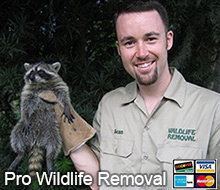 If you have a Green Bay wildlife problem and need help, call Green Bay Wildlife Removal at 920-351-4229. They provide professional wildlife control for both residential & commercial customers in the
city of Green Bay. They offer custom Green Bay wildlife control
solutions for almost any type of wildlife problem, whether
it be the noises of squirrels running through the attic, a colony of bats living in a building, or
the destructive behavior of a raccoon, they have the experience and the tools to quickly and professionally
solve your wild animal problem in Brown County in Wisconsin. Check their prices, and for a consultation, give them a call at 920-351-4229
If you have a Green Bay wildlife problem and need help, call Green Bay Wildlife Removal at 920-351-4229. They provide professional wildlife control for both residential & commercial customers in the
city of Green Bay. They offer custom Green Bay wildlife control
solutions for almost any type of wildlife problem, whether
it be the noises of squirrels running through the attic, a colony of bats living in a building, or
the destructive behavior of a raccoon, they have the experience and the tools to quickly and professionally
solve your wild animal problem in Brown County in Wisconsin. Check their prices, and for a consultation, give them a call at 920-351-4229
Our wildlife control services extend throughout the Green Bay area, including Sturgeon Bay animal control in Door County and Kewaunee County and the towns of De Pere, Suamico, Howard, Ashwaubenon, Bellevue, Denmark, Hobart, Allouez, Greenleaf, New Franken, Pittsfield, Glenmor, Hollan, Morrison, Humboldt, and more.
You're still reading this page? We do not operate Green Bay wildlife rescue, or a Green Bay zoo or nature center, or Green Bay wildlife sanctuary or refuge for volunteers. We are a privately owned nuisance wildlife removal service company. If you need a pro in Green Bay to solve your problem for you, call Green Bay Wildlife Removal: 920-351-4229 and they can help you with your Green Bay wildlife problem.








































